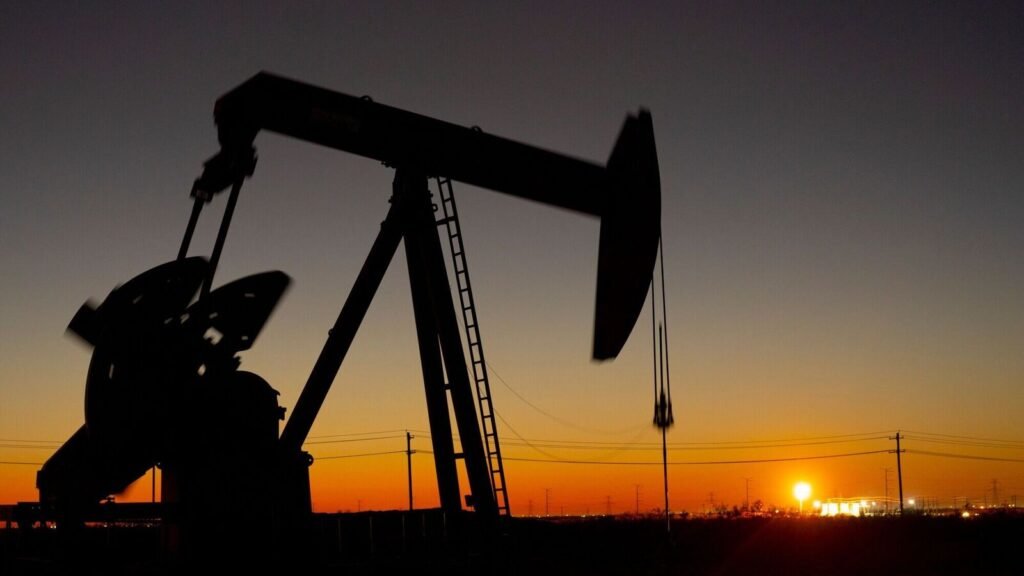Oil bosses have big hopes for the AI boom

This week 180,000 people descended on Abu Dhabi to attend ADIPEC, the global oil-and-gas industry’s biggest annual gathering. This year’s focus, perhaps unsurprisingly, was the nexus of artificial intelligence (AI) and energy. On the eve of the jamboree Sultan Al Jaber, chief executive of ADNOC, the Emirati national oil giant, convened a private meeting of big tech and big energy bosses. A survey of some 400 energy, tech and finance bigwigs released in conjunction with the event concluded that AI is set to transform the energy business by boosting efficiency and cutting greenhouse-gas emissions.
That is a high-minded vision. Many energy bosses, though, have their hopes set on a more immediate windfall from the AI frenzy, as tech giants hurry to find ways to power the data centres they are building. “Hyperscalers are driving crazy demand into natural gas right now,” said Murray Auchincloss, the chief executive of BP, late last month. In September Mike Wirth, his counterpart at Chevron, argued that “AI advances will depend not only on the design labs of Silicon Valley, but also on the gasfields of the Permian Basin.” How long big tech’s love-in with big oil will last, though, is unclear.
The oil-and-gas industry has recently been squeezed. Rising production in the Americas and anaemic demand in China have depressed oil prices, despite the threat of a widening conflict in the Middle East. Western oil giants, including those run by Messrs Wirth and Auchincloss, have recently reported weak quarterly profits, dragged down by oil prices that are about 15% lower than a year ago.
The AI boom may provide some relief for the oilmen thanks to rising demand for natural gas. Goldman Sachs, an investment bank, estimates that America’s data-centre boom will require an incremental 47 gigawatts (GW) of power capacity by 2030, with 60% coming from gas and 40% from renewables such as wind and solar. It thinks the gas market could grow by 50% globally during the next five years.
Many of the tech giants leading the AI charge, though, have made noisy pledges to achieve net-zero emissions of greenhouse gases. They will struggle to meet them if they power their data centres with natural gas. When a local utility in America’s South tried to persuade regulators to approve the building of new gas-fired plants to meet growing power demand, a coalition of tech companies threatened to build their data centres in another state unless clean energy was offered instead.
The problem is compounded by growing evidence that natural gas may be more harmful to the climate than claimed by the industry, which holds that burning it emits half as much greenhouse gas (GHG) as coal. But that claim is true only if the upstream emissions associated with producing and transporting gas are not included. The venting and flaring of methane, a more potent GHG than carbon dioxide, is a particular problem.
To their credit, a number of the biggest oil-and-gas companies have committed to slashing their methane emissions. But progress so far has been slow. The World Bank estimates that upstream flaring of methane in the global oil-and-gas industry grew by 7% from 2022 to 2023. Analysis by the Environmental Defence Fund, a green group, suggests that methane emissions from America’s oil-and-gas patch are four times greater than what has been calculated by the Environmental Protection Agency, a government body.
That puts tech giants in a bind: to avoid falling behind their competitors in the AI race, they may have to compromise on their climate pledges, or at least defer them. Even if they don’t, by cornering what clean-energy capacity already exists, they may force other industries to rely on gas for longer. That helps explain why tech firms are pouring money into developing their own sources of clean energy. Microsoft, one of the hyperscalers, has entered into a $10bn deal with Brookfield, an asset manager, to develop over 10GW of renewable energy to power its data centres. More such deals may come. In the meantime, add oil bosses to the list of winners from the AI boom.
© 2024, The Economist Newspaper Ltd. All rights reserved. From The Economist, published under licence. The original content can be found on www.economist.com








